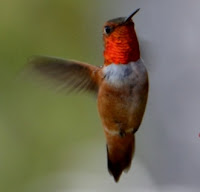Passerculus sandwichensis
Appearance:
- Grayish-brown upperparts with dark streaks
- White underparts with dark streaks
- Yellowish eyebrow stripe
- Thin, white crown stripe
- Short, forked tail
When I snapped this picture earlier today, I didn't even realize it was a new bird for me as it closely resembled a Song Sparrow. I was only when I got home and studied the photo that I saw the yellow lores, one of the distinguishing features of the Savannah Sparrow. This bird also lacks the Song Sparrow's prominent, central breast spot. Earlier this spring, a fellow birder told me that the song of this bird is often undetectable to people as they age because of its high pitch. Well, my hearing is just fine, thank you very much. The soft chips and trill made by this bird sound almost insect-like.



























